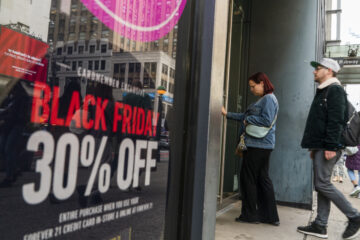A study by Forage ranked cities in three categories: financial security, mental and physical well-being, and social interaction.
Achieving a work-life balance has gained in importance, especially for young people, in the wake of the covid pandemic.
With that in mind, Forage, a career service platform for students, has created a list of the best cities for young professionals in terms of work-life balance.
The study looked at cities in counties with more than 300,000 people. It ranked cities in three categories: financial security, mental and physical well-being, and social interaction.
The survey used 10 specific metrics:
Average commute timeAverage hours worked per weekUnemployment ratePercentage of renters spending more than 30% of their income on rentPercentage of employed people without health insuranceAverage number of mentally unhealthy days reported in the past 30 daysPercentage of the population between 20 and 29 years oldWalkabilityPercentage of the population who live within a 10-minute walk of a parkArts, entertainment, and recreation establishments per capita.
The top 10 finishers are:
Madison, Wis.: The average number of weekly hours worked in Madison (36.6) scored in the eighth percentile across all cities Forage examined. Madison is also in the 97th percentile for percentage of the population between 20 and 29 years old — 24%.Lincoln, Neb.: It has both a very low average commute time of 18.4 minutes and a very low unemployment rate 2.8%. It’s in the 10th percentile for average number of mentally unhealthy days per month (3.62).Boulder, Col.: It’s in the top percentile for hours worked — 33.3 per week. Also, 93% of its population lives within a 10-minute walk of a park. And 29.3% of the population is aged 20 to 29.St. Paul, Minn.: Almost everyone there lives within a 10-minute walk of a park–99%. The city also scores well on average hours worked per week (36.9). The commute time is only 21 minutes.Cambridge, Mass.: Only 1.1% of employed people living there don’t have health insurance. It’s in the 99th percentile for percentage of its population between 20 and 29 years old (30.9%) and walkability.Minneapolis: It’s in the top 3% for poor mental health days (3.53 per month) and percentage of the population within a 10-minute walk of a park (98%).Waukesha, Wis.: It’s unemployment rate (2.2%) stands in the second percentile. Only 40.5% of its renters spend more than 30% of their income on rent.Seattle: A total of 99% of residents live within a 10-minute walk of a park. It also does well on walkability, and 21% of its population is aged between 20 and 29.Evanston, Ill.: It ranks in the bottom 5 percent for hours worked — 36.2 per week. It’s in the 97th percentile for walkability, and 99% of residents live within a 10-minute walk of a park.Somerville, Mass.: All of its residents live within a 10-minute walk of a park. Also, only 33% of renters spend more than 30% of their income on rent.
The author of this story grew up in Evanston, Ill.


